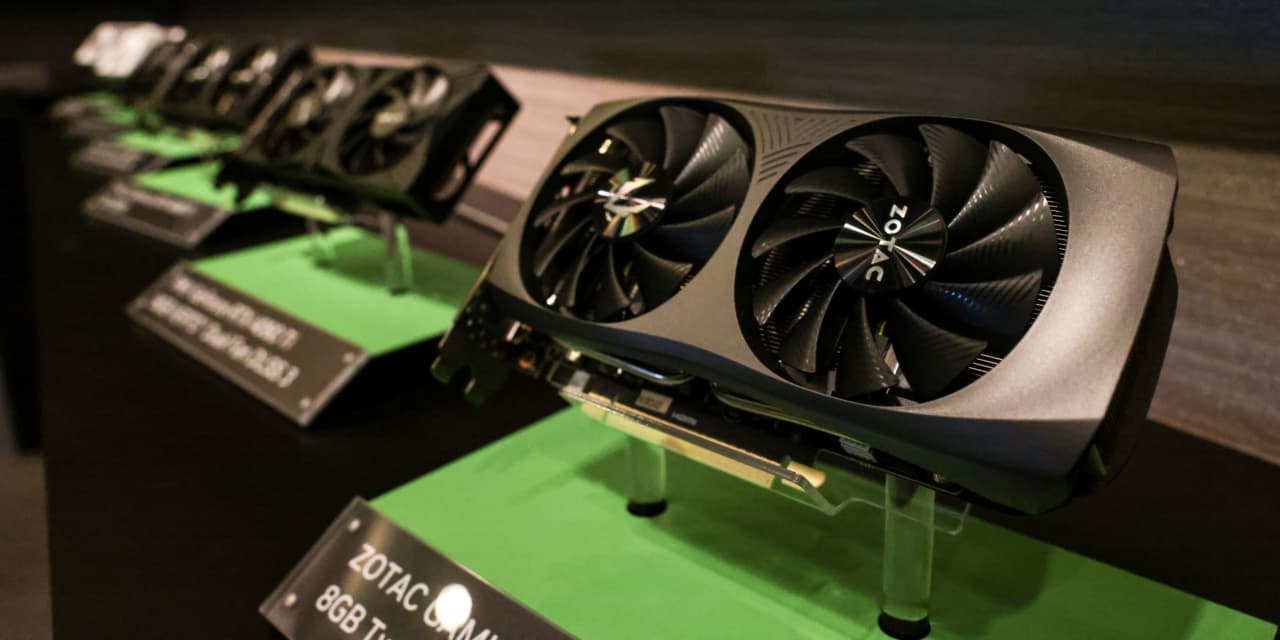As
Nvidia
goes, so goes the stock market? That may sound simplistic, but it has been true of late. While the
S&P 500
and the chip maker’s stock haven’t moved in lockstep, the correlation is there.
Nvidia stock (ticker: NVDA), up over 200% for the year to $453, has been propped up by buying several times when the rally has paused. It happened when the stock price hit $408 in mid August, at $410 in late September, and then again at $407 in late October.
The S&P 500, which is up 14% for the year at about 4360, found support at roughly 4400 a few times in August. It rallied from there, dropped, and encountered support at about 4300 in late September. In its next downswing, it found support at just over 4100 in late October before rallying all the way back up to its current level.
The reason Nvidia stock is helping the S&P 500 is that the chip manufacturer has been the ultimate play on artificial intelligence. Not only is the company’s market capitalization of $1.13 trillion about 3% of the S&P 500’s total market value, which means the stock has a significant influence over the index’s level, Nvidia is also a bellwether for the rest of the AI space.
If other AI stocks such as
Microsoft
(MSFT) and
Alphabet
(GOOG) are performing well, the S&P 500 will thrive because those companies also have hefty weightings in the index.
“Nvidia [is] arguably the most important stock in the world right now,” wrote Julian Emanuel, a strategist at Evercore, in a research report on Sunday.
Nvidia supplies chips that data centers use for AI. Analysts expect sales to have almost doubled this year to $52.5 billion, according to FactSet, which is pushing profit margins upward. Earnings per share are expected to have almost tripled.
With overall cloud spending expected to grow by double digits annually for the next several years, Nvidia has room to increase sales just over 20% annually over the next five years to almost $150 billion by 2028, according to FactSet estimates. That would bring annual growth of close to 30% in EPS.
Microsoft highlights how other big tech companies also stand to benefit as companies trying to take advantage of AI spend more on cloud computing. Analysts expect 13% annual sales growth, which would lift sales to about $412 billion by 2028, led by growth of more than 20% at its Azure cloud platform.
Profit margins may not expand rapidly, given that the company will have to keep boosting spending on marketing and research and development. But even if EPS increases in line with sales, as analysts expect, that would still represent solid long-term growth.
That is why Microsoft stock has gained almost 50% this year to $355. It has seen consistent support in the low $300 areas for the entire second half of the year.
Meta Platforms
(META) and Alphabet (GOOGL) benefit from AI as well, so continued strong growth at Nvidia implies gains for the other three stocks. That group has a combined market value of more than $6 trillion, which means continued gains for the four can help the S&P 500 to continue to rise.
Continued AI-related growth for them would be a signal that their customers are using AI to become more efficient, or see the potential to do so. They could do the same work with less staff, increasing their profit margins and bottom lines, which would be additional fuel for gains in the S&P 500.
There’s an “unquantifiable viewpoint that the boost to margins from generative AI is long-term,” said Emanuel, the Evercore strategist.
So watch Nvidia as an indicator of the health of the broader market.
Write to Jacob Sonenshine at jacob.sonenshine@barrons.com
Read the full article here













Leave a Reply